10 Things to do inside and outside Cusco, Peru.
A country that is on the bucket list of almost any traveller, is Peru. A unique country in South America that will take you from ancient Inca structures to dry deserts, Spanish colonial cities to local markets and Andes mountain landscapes to Amazone jungle treks. Peru has many highlights, but one of the best places to visit when travelling in Peru is undoubtedly Cusco. It is situated at the heart of the Andean Mountains in central Peru and can be reached by bus or by flight from many cities in Peru. Cusco has an incredible amount of things to see, do and taste and making a choice is hard. After spending almost ten weeks in Cusco, I have tried to select the best places to go that will make your trip to Peru unforgettable.
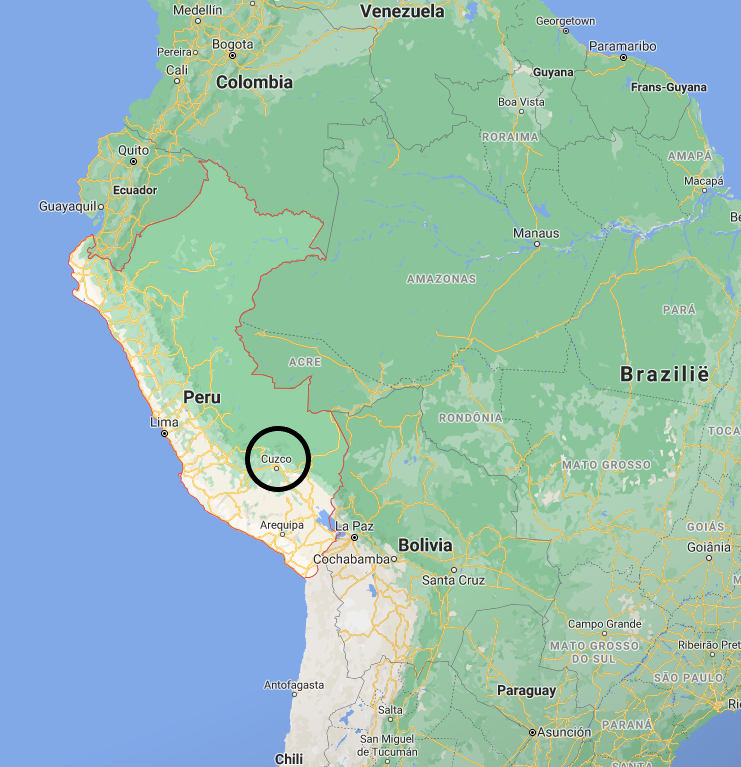
The history of Cusco
Cusco, an ancient yet vibrant city in the middle of the Andes. Cusco has a rich history dating back to the 14th century. Cusco used to be the centre of the old Inca emporium and still is the biggest city close to the famous world wonder Machu Picchu. It might be hard to imagine that the entire Inca empire consisting of various ruins scattered throughout contemporary Peru, Ecuador, Bolivia and Chile, is ruled from Cusco. The Inca’s were a highly developed society with sophisticated agriculture, architecture and social standards. The Incas had a unique way of constructing. They used large boulders which they stacked on top of each other without using cement. Up until today, it remains inexplicable how the Inca’s managed to construct buildings with stones weighing up to 70 ton! The ancient boulder constructions can be found anywhere in Cusco. One boulder that remained intact has 12 corners but still fits seamlessly in between other boulders. This extraordinary boulder can be found in the street Hatunrumiyoc among with many lovely souvenir shops. Sacsayhuaman and Machu Picchu as well created constructed by this extremely sophisticated way of building and consist of large boulders.
Unfortunately, the Spanish invaded Peru and in 1576 the Inca empire ended. The Spanish demolished many buildings and replaced them with typical white houses with red roofs. However, they did not manage to destroy every building in and around Cusco, resulting in an extraordinary mix of Spanish and ancient Inca architecture. Plus, the Spanish never found Machu Picchu which is up until today still as it was originally found.
Altitude of Cusco
When travelling to Cusco, Peru, one should certainly not underestimate the height of this city. Cusco has a height of no less than 3400 metres! When arriving it will leave you gasping for air, especially when walking up the hills for the best views and cutest restaurants. The best advice given by the Peruvian locals was to allow yourself a couple of days to acclimate and drink several cups of thee from coco leaves. Naturally, most people associate the coco leave with cocaïne as this plant is an essential ingredient. However, to avoid headache, nausea, vomiting, dizziness and shortness of breath, otherwise called altitude sickness, I would strongly recommend drinking this coco tea and chewing coca leaves. It is completely safe to do so. Peruvian locals chew these leaves all day and have been doing so for centuries.
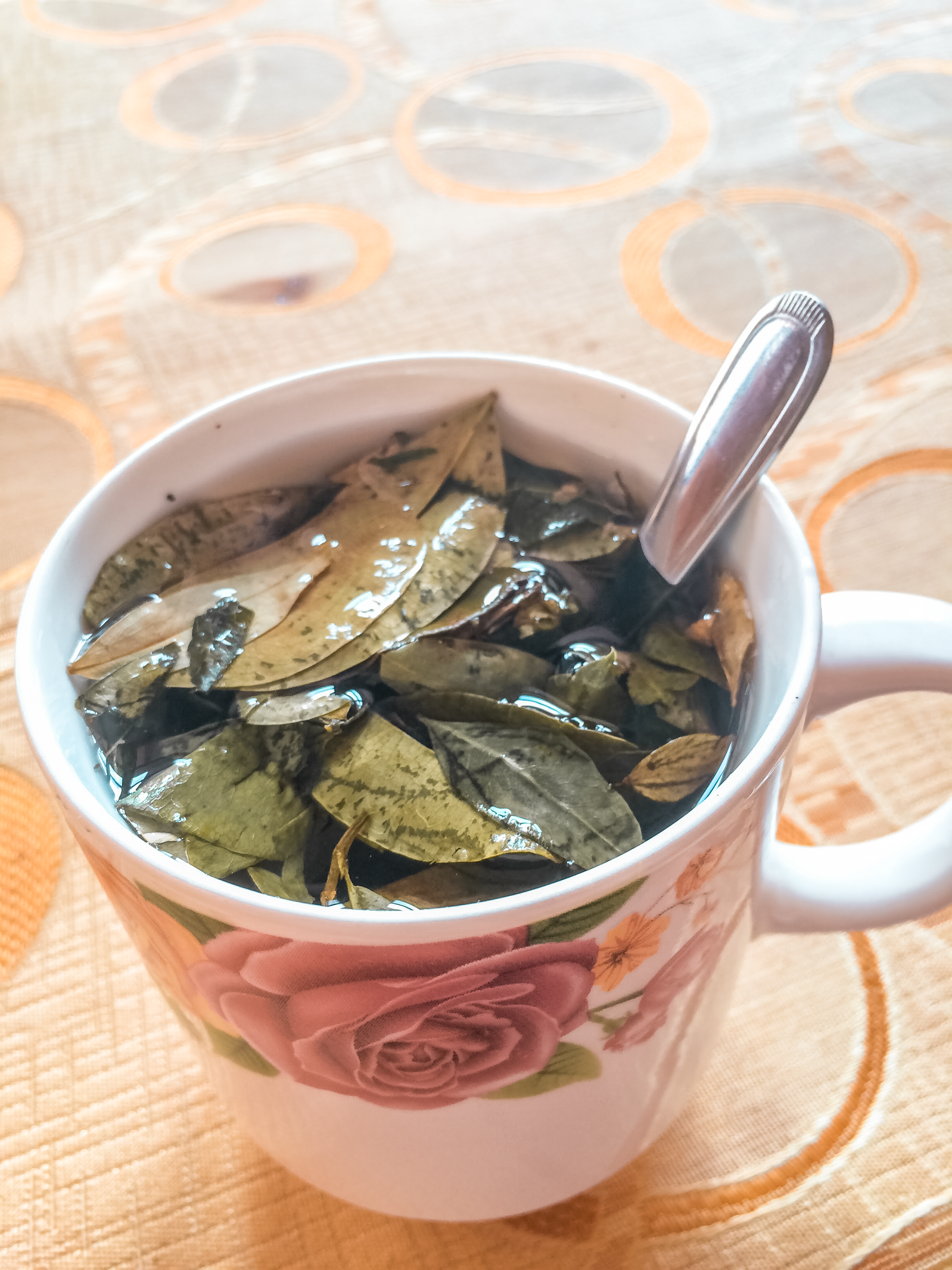
Inside Cusco
1. Plaza de Armas
El Plaza de Armas is located in the historical centre of Cusco and is a vibrant square with many restaurants, souvenir shops and clubs. Plaza de Armas is surrounded by two beautiful churches named ‘Capilla del Triunfo’ and ‘Iglesia de la Compañía de Jesús’. Close to the churches, the impressive Cusco Cathedral was built. The Plaza de Armas is always crowded with both locals and tourists from all around the world and there is always something to see or do. Just have a seat at a balcony of one of the surrounding restaurants, have a coco tea or lemonade and enjoy everything there is to see. You will never be bored here.
Tip: Avoid the llama ladies. In the surrounding streets around Plaza e Armas you will find locals who are traditionally dressed and drag an alpaca or lama around the city all day. These llama ladies will ask you if you want to take a picture with them and ask for a small fee. Of course, this seems great fun being a tourist. The opposite, however, is true. These alpacas are hardly fed or given water, dragged through the streets with brute force and don’t get very old. Of course, I have no picture of my own to show. If you really want to take a picture with an alpaca (gosh they are so cute) then go to the Campo de Artesanos For Peruvian locals, it is a way of generating income, but if you want to support the locals in Peru take a look at tips to support locals down below.
2. Cusco Cathedral
Right next to the Plaza de Armas you will find the gorgeous Cusco Cathedral. It is one of the highlights of Cusco and cannot be missed. The Spanish started building the Capilla del Triunfo in 1539 as a triumph of defeating the Inca’s. Then they started building the Cusco Cathedral itself and added a church called ‘Iglesia de Jésus Mariá’ on the left. Among many other intriguing pieces of art, the Cusco Cathedral is home to a famous painting called ‘The last supper’ by Marcos Zapa, has a main altar made of Bolivian silver and owns the ‘El Señor de Los Temblor’ which is carried around Cusco every Easter.
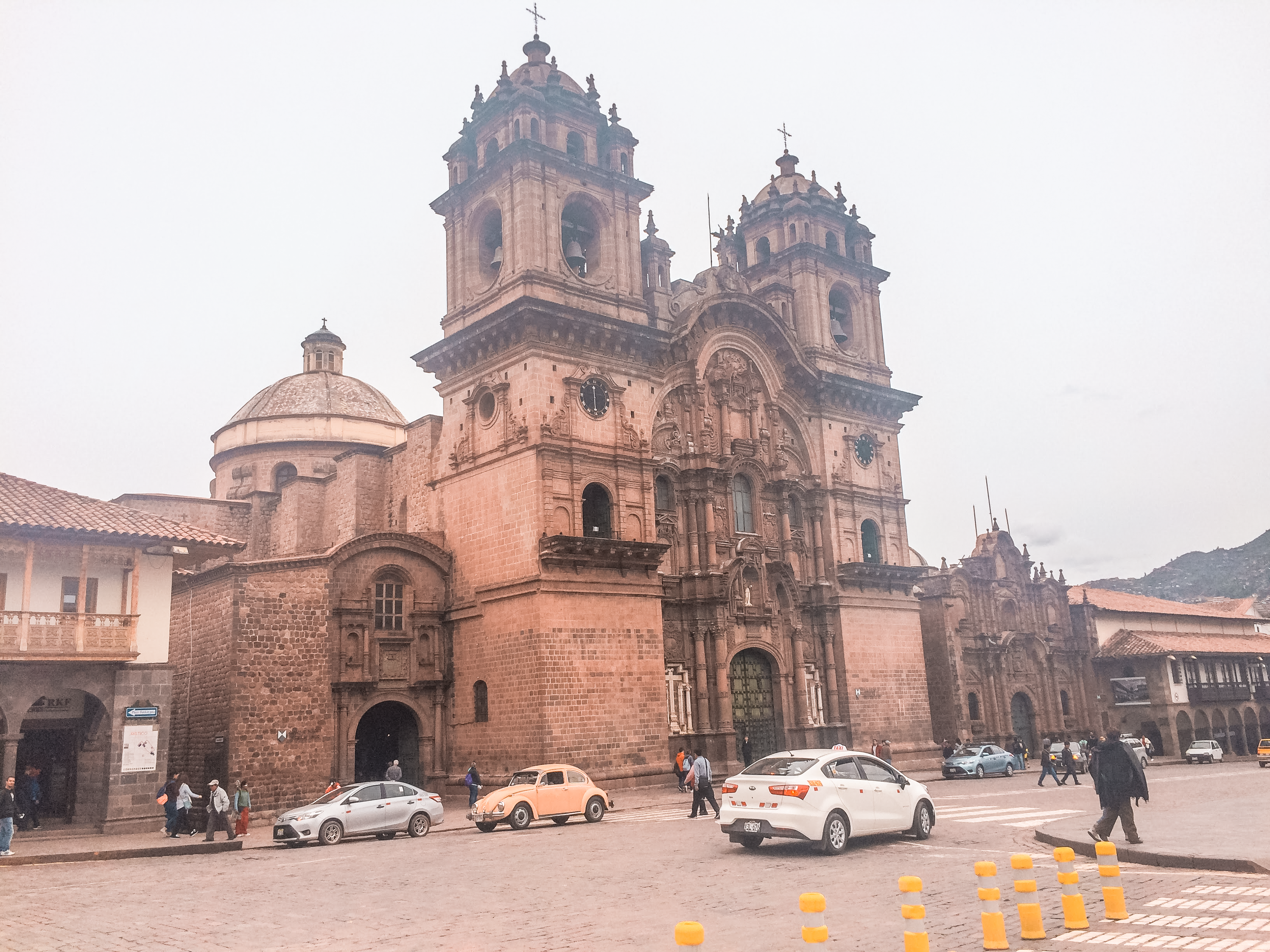
3. Sacsayhuaman
Apart from the hilarious name which is by many pronounced as “sexy woman”, Sacsayhuaman is one of the must-visits in Cusco. Assessing its location, fortified terraces and watchtowers it is likely that Sacsayhuaman has once served as a fortress. The boulders used to construct the terraces were enormous with a size of five metres and are considered to be the largest boulders ever used for a pre-Hispanic construction. Sacsayhuaman is one of the archaeological places that can be visited with the Boleto Turistico.
This enormous Incacomplex is situated at an altitude of 3700 metres about two kilometres from Cusco. It can be reached by foot, taxi and local bus, but be warned, it is a very steep hill that will require a fairly good condition to be climbed. Once you reached the top, the view over Cusco and its surrounding mountains is incredible. With its mysterious history and breathtaking views, Sacsayhuaman is definitely worth a visit.
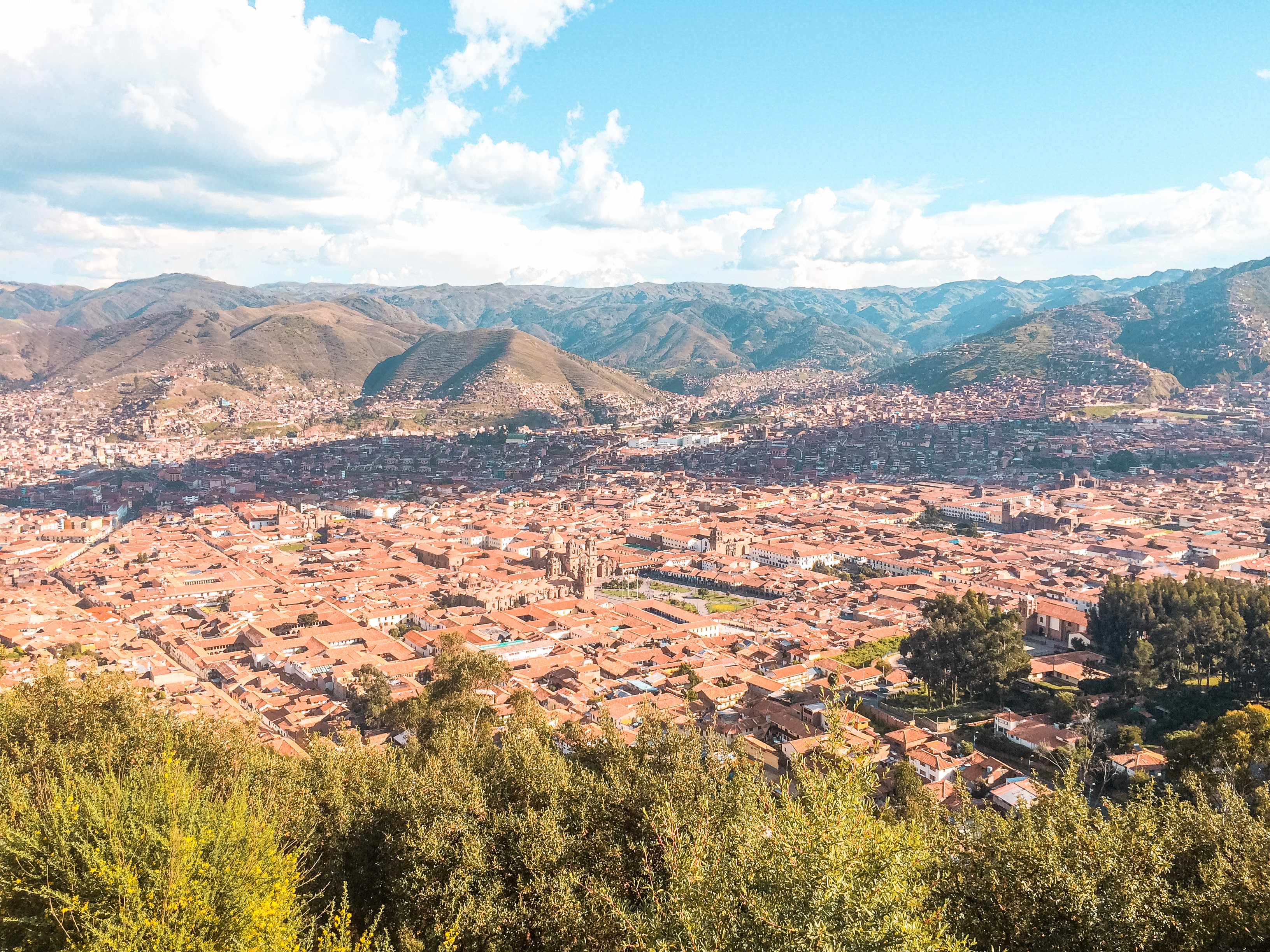
4. San Blas
Close to the Plaza de Armas, the small neighbourhood San Blas can be found. It requires walking up a pretty steep street but San Blas is absolutely lovely. Many small boutiques and creative shops offer their art, souvenirs, handmade tablecloths, sweaters or scarves. Occasionally even small markets are held at the central square in San Blas. Stroll through the tiny picturesque street and try out some of the delicious restaurants situated in San Blas. Up for a little culture? Visit the tiny little church, Iglesia de San Blas situated in the middle of this beautiful neighbourhood.
5. San Pedro Mercado
Personally, this is my favourite place in Cusco. The San Pedro market located a couple of blocks from the Plaza de Armas. Many Peruvian locals buy their groceries here as they cannot afford supermarkets. Most supermarkets are very expensive in Cusco (maybe Peru in general). Although you will probably not find any fresher fruits, vegetables or meat than at the San Pedro market, you do need a strong stomach too. Peruvians have a different culture in terms of eating meat and you will literally find anything at this market. Think of pigs noses, headless chicken or alpaca legs. Fortunately, this is only a small area. The rest of the stands are made up of fresh juice stalls with the kindest ladies preparing them right in front of you, very cheap and pretty souvenirs and all kinds of delicious herbs and nuts. You will also find stands with all kinds of superstitious relics. It is very interesting to see the colourful powders, coco leaves and loads of other stuff that bring luck are offered during ceremonies. If your Spanish is good enough, don’t hesitate to ask the vendor to explain what the relics mean to the Peruvians. These relics often relate to ancient Inca rituals of which locals are very proud. They like sharing their culture with you.
Tip: If you are into avocado’s, you will find the biggest and most delicious avocado’s here. The best part: they will hardly cost you anything.
6. Campo de Artesanos, llamas y alpacas
One thing that is by far on most travellers their bucket list is taking a picture with an alpaca. Let’s be honest, who doesn’t want to take a perfect Instagrammable selfie with one of these extremely cute fluffy creatures? Now I can assure you, these animals are extremely stubborn, they spit and it is very hard to take a picture with them (unless you take one with the llama ladies, but it is better to avoid them). Taking a selfie with a ‘wild’ alpaca is impossible since they are a lot faster than they seem. To save your holiday and get you that perfect Insta-llama-selfie, I will give you the golden tip to take a picture with either a llama (pronounce: L-jama) or alpaca. Go to the Campo de Artesanos on Calle Loreto one street away from the Plaza de Armas. These llamas and alpacas have grass to walk around and eat, water to drink and are friendly. They are used to tourists and will most of the time let you take a picture with them in exchange for additional grass or other treats. I have to admit, they are still stubborn creatures that have to be lured into a selfie. Be careful to not force them, because they will let you know. It is undoubtedly the best place in Cusco and maybe even Peru to take a picture with an alpaca.
The owners of Campo de Artesanos rely on their alpaca’s as well and ask for a voluntary contribution. Please do so, the animals and surrounding shops are their main source of income, but taking care of the alpacas costs money. The owners of Campo de Artesanos in Cusco are very friendly, don’t be a rude gringo.
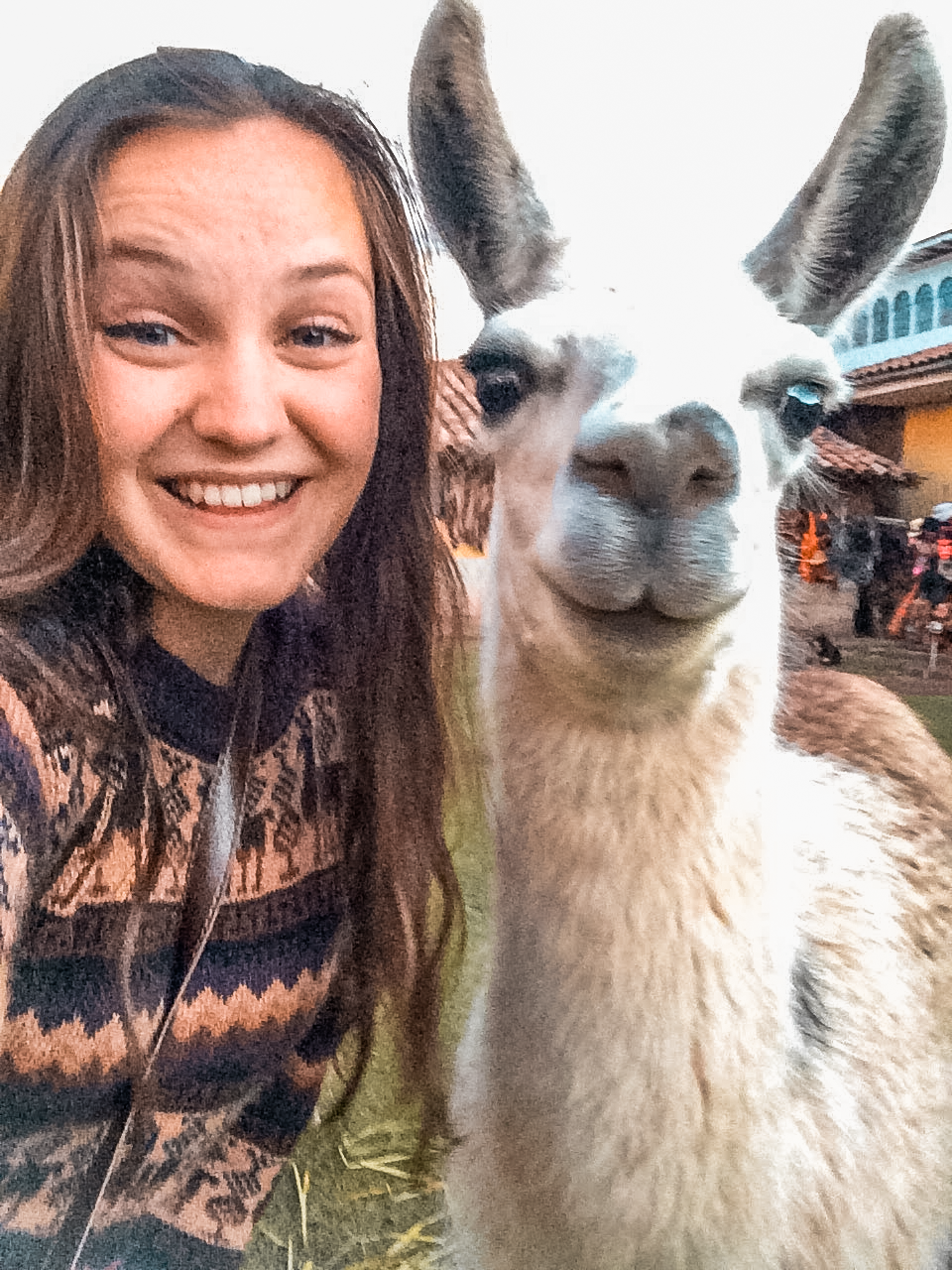
Around Cusco
7. Valle Sagrado
The Incas have left their mark in many places in Cusco but as well in the surrounding valleys called ‘Valle Sagrado’ which means sacred valley. Valle Sagrado is located about an hour drive outside Cusco and knows many archaeological Inca ruins. The valley was formed by the Urubamba River and is breathtakingly beautiful.
Salineras de Maras
The Salineras de Maras are salt terraces located near the village of Maras. It is about 1,5 driving from Cusco and can be combined with several other archaeological Inca sites. The salt terraces of Maras have approximately 3000 terraces constructed during the years of the Inca emporium and have been created to extract salt. Nowadays it is still used for extracting salt and one of the most expensive types of salt in the world is extracted here, in Maras. The terraces are very impressive to see and the view is amazing, but be aware, it is very intense to walk up the steep path and I recommend going early and bringing water and food.
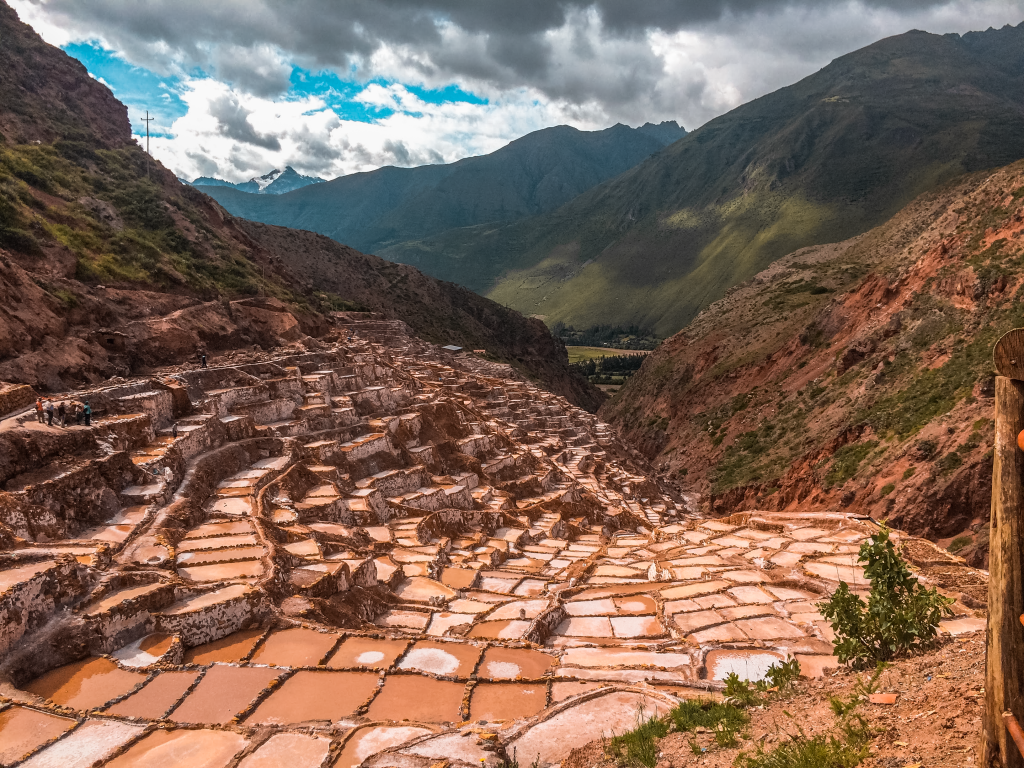
Moray
Very close to the Salineras de Maras in the sacred valley you will find Moray. The circle-shaped terraces of Moray are a very mysterious construction. Although there has been extensive research on the purpose of the circles of Moray, no one know for sure what they served for. One of the theories is that it was used for agricultural purposes. The Inca’s experimented with growing crops on different levels of the terraces and assessed which crop grew best on what level considering sunlight, wind and air pressure. Another quite exceptional feature of Moray is the irrigation system that was quite extraordinary for the 15th century. Visually Moray is very pretty and it seems almost impossible that the Inca’s were able to create such perfect circles with a perfect diameter without big machinery and technology.
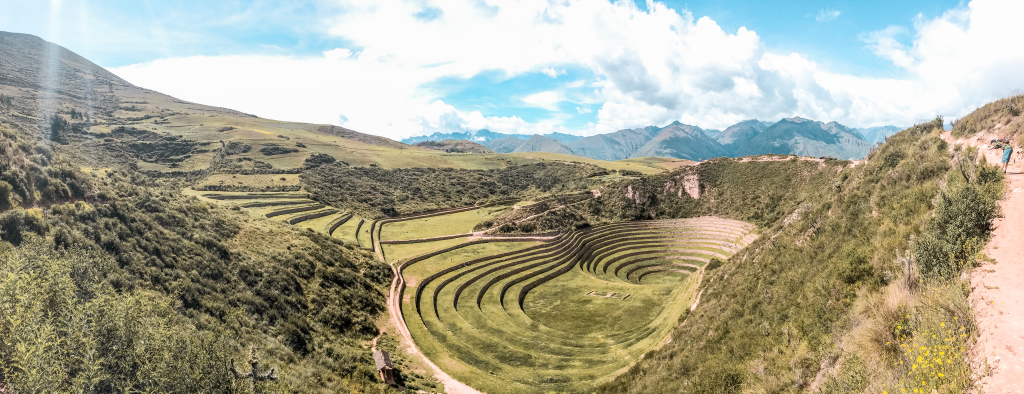
Ancient Inca city Pisac
Although reaching the ruins of Pisac is challenging, you will be rewarded with remarkable ruins and a splendid view over the sacred valley captured between the Andean hills. If you suffer altitude sickness or do not have a good condition it is recommended to take a taxi up and walk back. Once up the hill, you can explore the ruins at your own pace. The ruins consist of ceremonial baths, religious buildings, temples and countless terraces. Take a moment to enjoy the magnificent view of the sacred valley and then continue down to the famous market of Pisac. The market of Pisac is fun and great to have a look around, but attracts many tourists and is, therefore, a bit more expensive than you might be used to in Cusco.
Ollantaytambo
Ollantaytambo was a vibrant city during the Inca empire period. When the Spanish came, it was surprisingly one of the few Inca cities that was not conquered. Eventually, the Spanish managed but Ollantaytambo was the last city that was captured.
Most impressive about Ollantaytambo is the high reaching terraces and ruins that are preserved very well. It requires climbing quite some big stairs but the view is absolutely amazing and the ruins impressive.Ollantaytambo is the gateway to Machu Picchu. Many tourists start their journey here either by train or by foot. Ollantaytambo also is a little village with small yellow houses, cute shops and tiny streets which makes it a perfect place to stay for a large number of tourists. This town can get pretty crowded!
Tip: Buy the Boleto Turistico. To prevent tourists in Cusco from buying a ticket for all archaeological sites, ruins and other interesting places, the municipality invented the Boleto Turistico Cusco. This ticket can be used for ten days, grants entrance to various tourist attractions and costs 130 soles. You can also buy separate ‘Circuitos’ for split routes, but this will eventually cost more and is only valid for two days. The Boleto Turistico Cusco will give you access to Moray, Pisac, Ollantaytambo and Chinchero. The Boleto Turistico can be bought at the Gallerias Turisticas located at Avenida del Sol 103. To get the most out of your ticket, consider visiting the unique and wonderful place Chinchero. Interested in receiving free information about Chinchero and more free tips about the Sacred Valley? Sign Up!
{{cta(‘a62f1cf8-fcf3-48f4-9c18-523db80be86a’,’justifycenter’)}}
8. Machu Picchu
Most likely when planning your trip to Peru, Machu Picchu is the number 1 on your to-do list, and with reason. This exceptional place was created by the ancient Inca’s around 600 years ago and it is mindblowing that this city is in such a great condition after such a long time. Machu Picchu is still in an amazing state is because the Spanish never discovered this place, but also because of the unique and sophisticated Inca Architecture. The construction techniques that the Inca’s used for Machu Picchu are that strong, the city even survived earthquakes. Nowadays it is the most visited archaeological site in South-America by 1.8 million people every year. To preserve the quality of this UNESCO world heritage site, there are strict rules you have to adhere to as a tourist.

Inca Trail
There are several ways to go to Machu Picchu. One of them is walking the traditional Inca path. The Inca trail was the only option during the Inca empire period. Nowadays, you have more options. Keep in mind that it is not possible to walk to Machu Picchu on your own, you have to book a tour. Book this tour very early (six months in advance at least). To preserve the traditional path, only a set amount of people are allowed each day.
Inca Jungle trek
The Inca Jungle Trek is a four-day adventurous trekking which involves rafting, mountain biking and ziplining. You will as well be walking for around 40 km to Aguas Calientes and the fourth day you will visit Machu Picchu.
Traditional Inca trail
The traditional Inca trail is the original path that the Inca’s walked to Machu Picchu. This trail involves four days of walking and you will pass several gorgeous ancient Inca ruins to eventually arrive in Aguas Calientes. The fourth day you will visit Machu Picchu. Be aware of the fact that this trail is the most popular (and most expensive) trail and should be booked months ahead. Full means full and there is no option to do this trail on your own.
Salkantay trek
The Salkantay trek lasts five days and is a bit different from the other treks. It involves 80 kilometres of walking divided over four days and you will sleep in a tent. You will pass the impressive Humantay lake on your way to Machu Picchu. It is a very impressive, but also intense trekking. It requires walking to great altitudes and is not for weakhearted.

Train
If you are short in time or not interested in walking for a couple of days, the train is the best way to visit Machu Picchu. Don’t be mistaken, this way of travelling to Machu Picchu is very impressive and the train is iconic. It is very old and quite slow yet very comfortable and with amazing views. Pay attention, you should buy tickets in time as it is a popular option and the seats are limited. First come first serve, in case the train is full, you have to walk to Aguas Calientes. Traintickets are offered by two companies: PeruRail and Ina Rail. Inca Rail is slightly cheaper but the prices still vary between $75 to $105 return ticket.
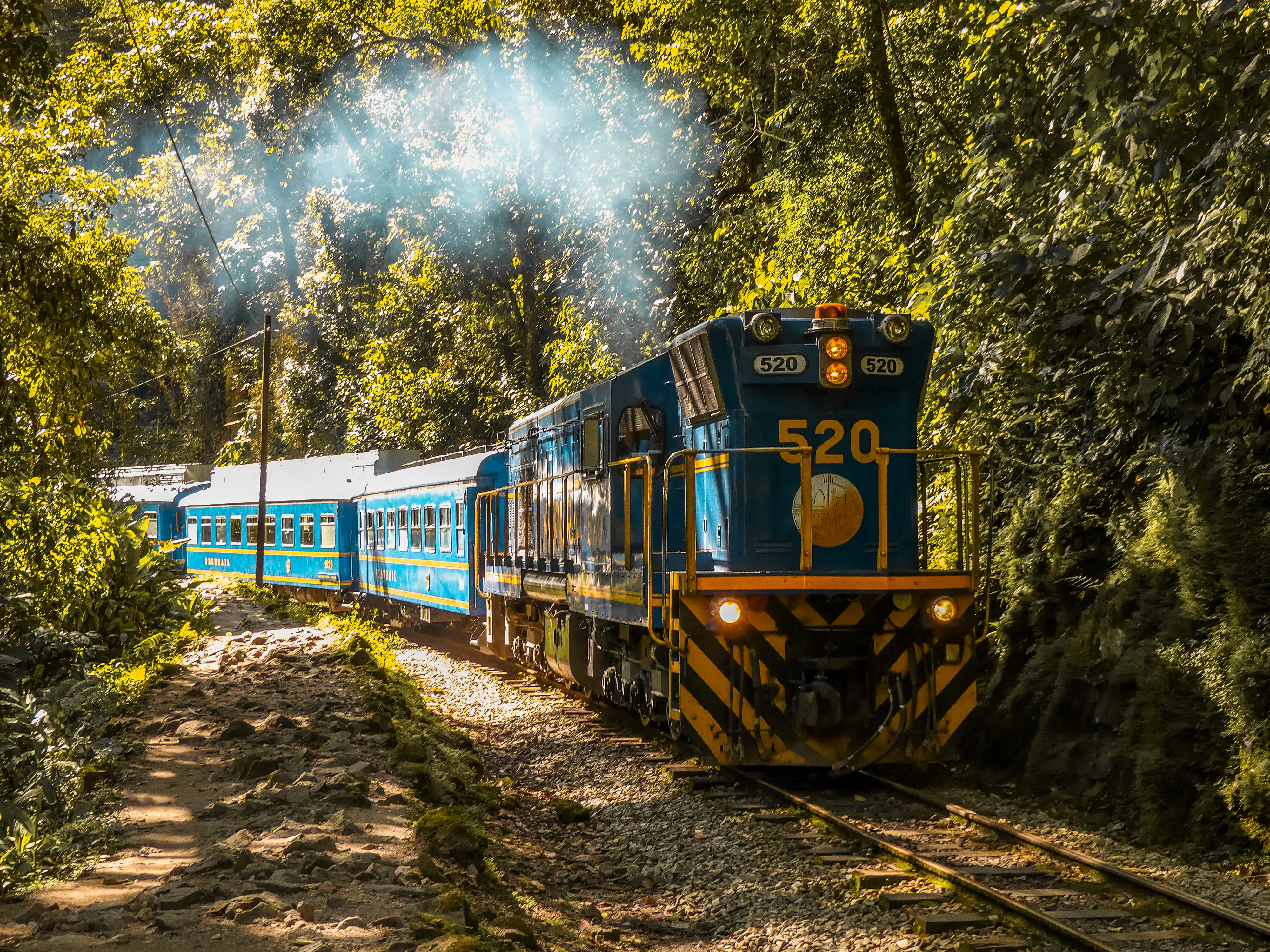
Machu Picchu
Machu Picchu, the lost city. This world wonder can be found close to Cusco crossing the sacred valley. Up until today, the exact history of Machu Picchu is unknown but many theories have evolved around this mysterious place. Machu Picchu is believed to be constructed for the Inca emperor Pachacuti around 1450 with the purpose of leisure for the Inca elite. Machu Picchu is also claimed to be a sacred city because of its position between the mountains which had high value in the ancient Inca culture. The lost city is called this way because Machu Picchu was never found by the Spanish conquerors and therefore never destroyed. In 1911 Machu Picchu was discovered by American researcher Hiram Bingham and the help of a Quechua boy, which is quite impressive considering it was covered with plants and trees. It has likely been in this original condition over a hundred years and believing that this city has been preserved so well is hard to understand.
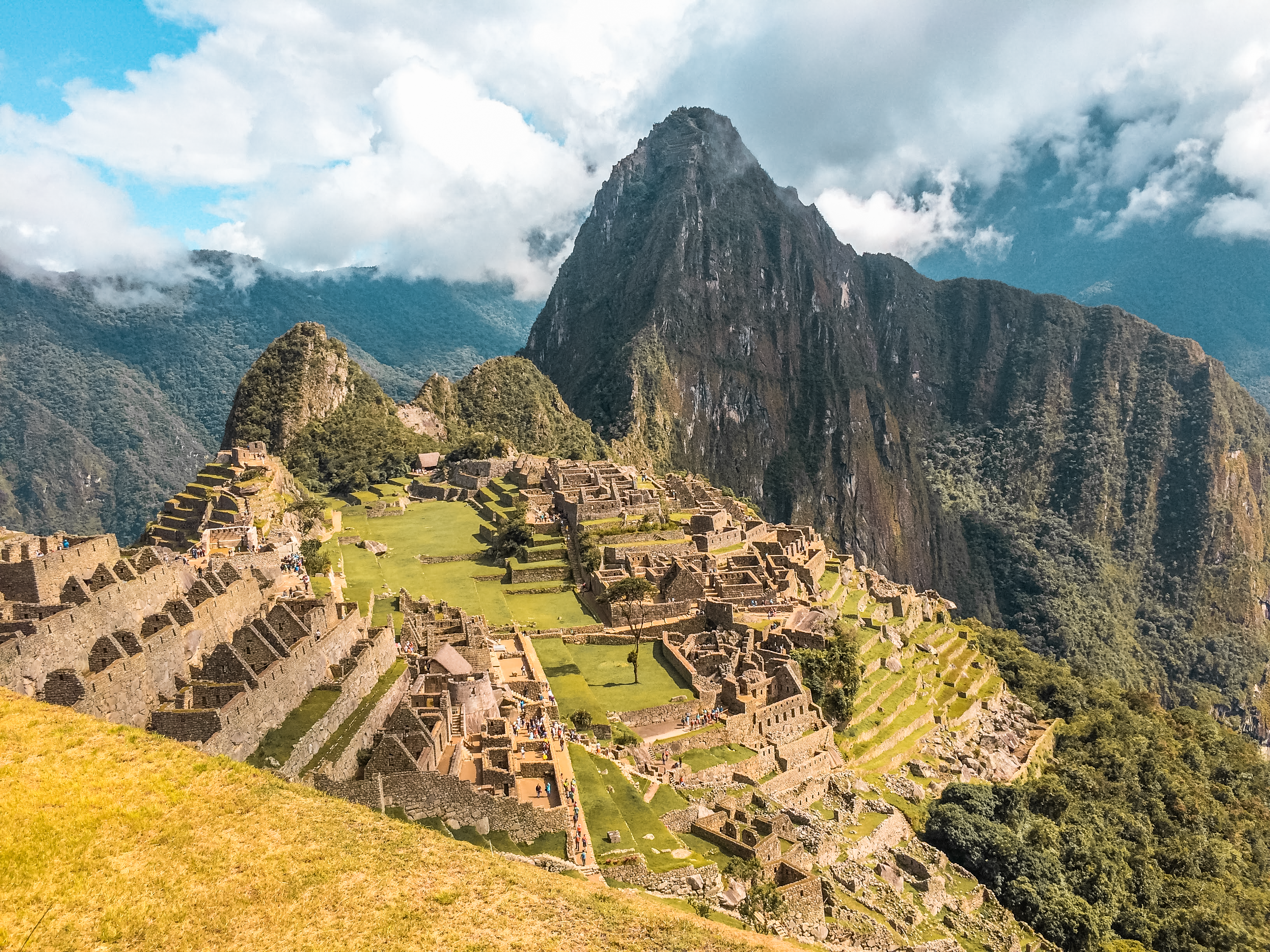
Before visiting Machu Picchu you have to choose a means of transport: Inca Trail or Train. Both options will lead you to the town Aguas Calientes (which means ‘hot water”) at the foot of Machu Picchu called after the hot springs located in this town. I would recommend spending the night here before visiting Machu Picchu as the best moment to visit the ruin is early in the morning. By early, I mean 5 am in the morning. This might seem ridiculous, but the benefits of heading up early are worth it. In the early morning, Machu Picchu is covered with a thick layer of mist but within the first hour, the mist clears up and Machu Picchu will appear. This is such a magical scene, you won’t regret this. Another benefit is the fact that it is hardly crowded as there are two options of going up to Machu Picchu.
The first one is by foot to end the traditional Inca Trail walking up 1700 uneven, challenging stairs. It takes most travellers a while to get up there and they will never be as early as the first bus, your second option. Already tired of only hearing about these steps? Then the bus is your best option. It will cost you around $20, two ways.
Tickets for Machu Picchu must be bought early, especially when visiting in high season. The entrance tickets can be bought at the official site of Machu Picchu or by a travel agency around Cusco.
9. Ausangate Rainbow Mountains
Most likely you will have seen these mountains pass by in your Facebook feed or posted by many travel bloggers. The Ausangate Montaña De 7 Colores, better known as Rainbow Mountains. These rainbow mountains are located in Peru and can be found very closely located to Cusco! The rainbow mountains are absolutely a highlight on your trip to Peru. The trekking is challenging but the view is rewarding, I have hardly seen anything prettier than the colourful rainbow mountains. Not only the marvellous view on top but also the walk itself is beautiful.
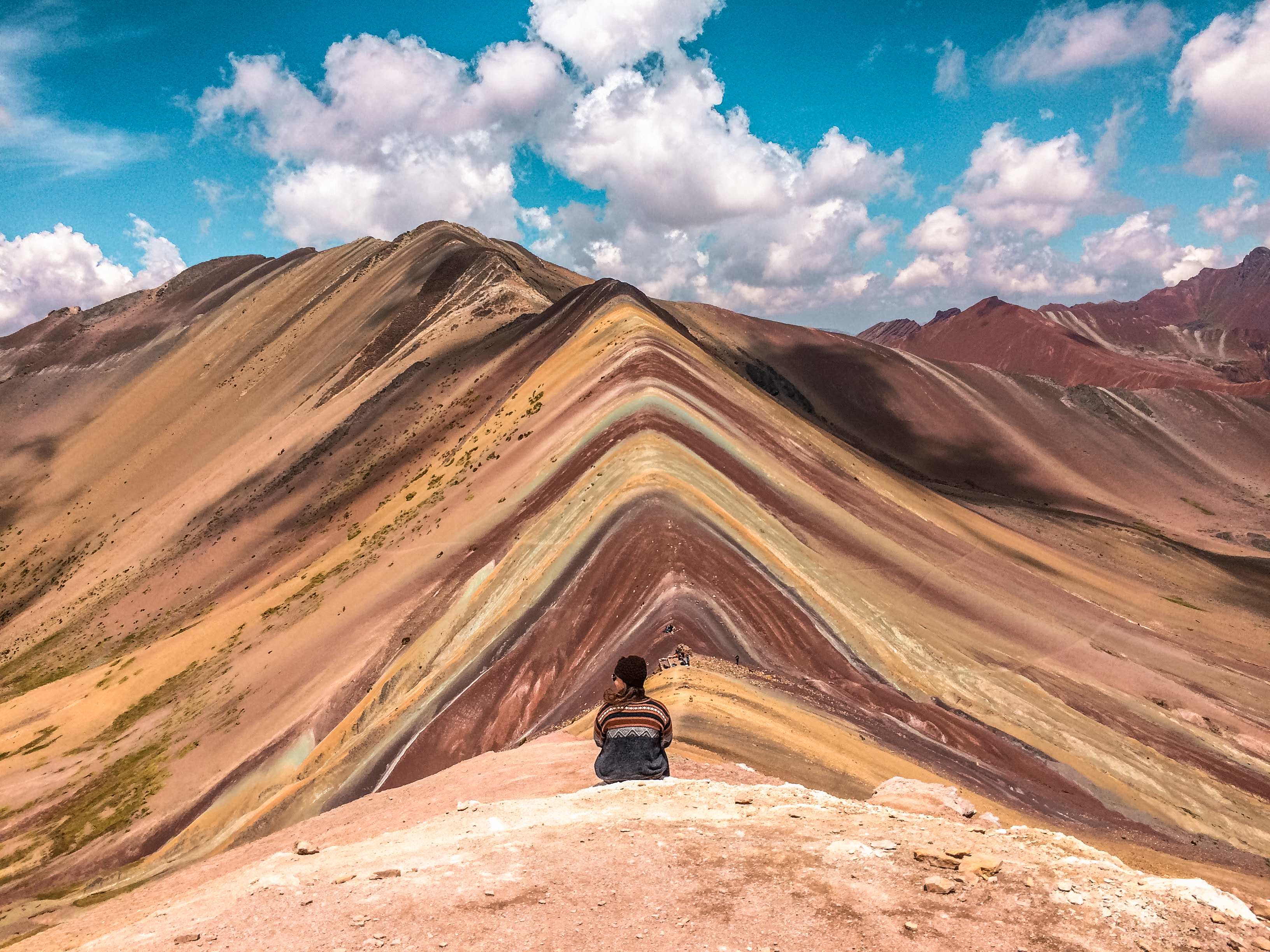
There are two options to visit the rainbow mountains: with a tour or by taxi. The benefit of going independently to the rainbow mountains could be visiting early in the morning to avoid the crowd. However, it is much pricier to have a taxi drive you there then just go by tour. Plus, the tour guides can tell you information about the mountains and watch you in case of an emergency.
As you have likely read in this article before there are a couple of warnings that one should be in good shape and have a decent condition walking up tourist attractions. Walking up to the rainbow mountains, however, is next level trekking and requires a more than average condition. The perfect Instagram shot of these rainbow mountains, are found on the top and require ascending to 5300 metres. Please, do not underestimate this altitude as the consequences can be severe for your health. Having a tour guide present can avoid problems when altitude sickness hits you unexpectedly. There is also an option to rent horses at the start of the trekking.
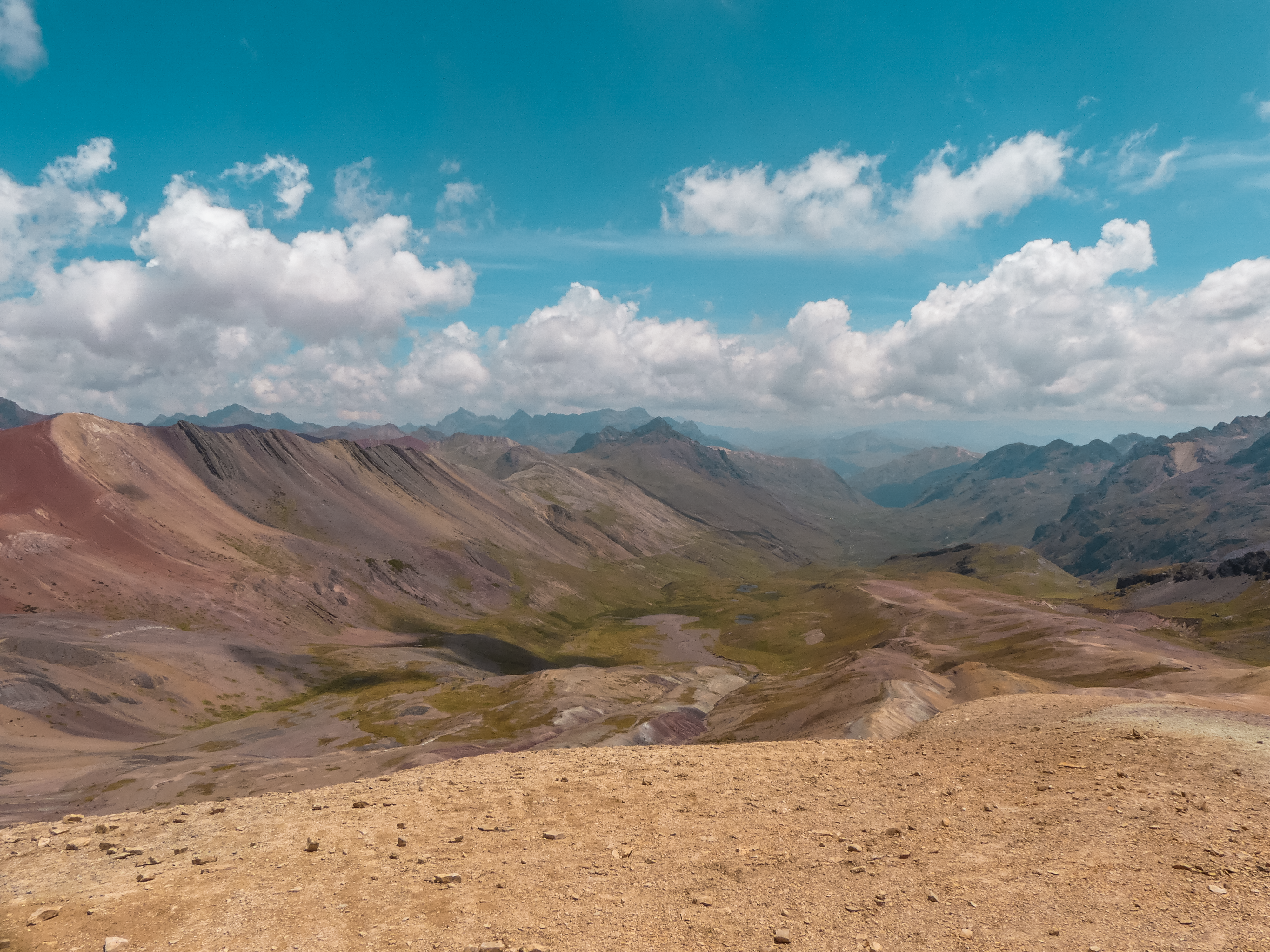
10. Try Peruvian Kitchen
Peru has the most delicious dishes and so many typical foods. It is hard to make a choice between the hundreds of restaurants in Cusco, so here are a couple of restaurants that will make your trip to Cusco the best.
Breakfast
Jack´s café
For the best pancakes and many other great breakfast dishes, Jack’s Café is your place. It is popular among tourists but with reason, the food is great. You will find Jack’s at Choqechaka 509, Cusco 08002, Peru.
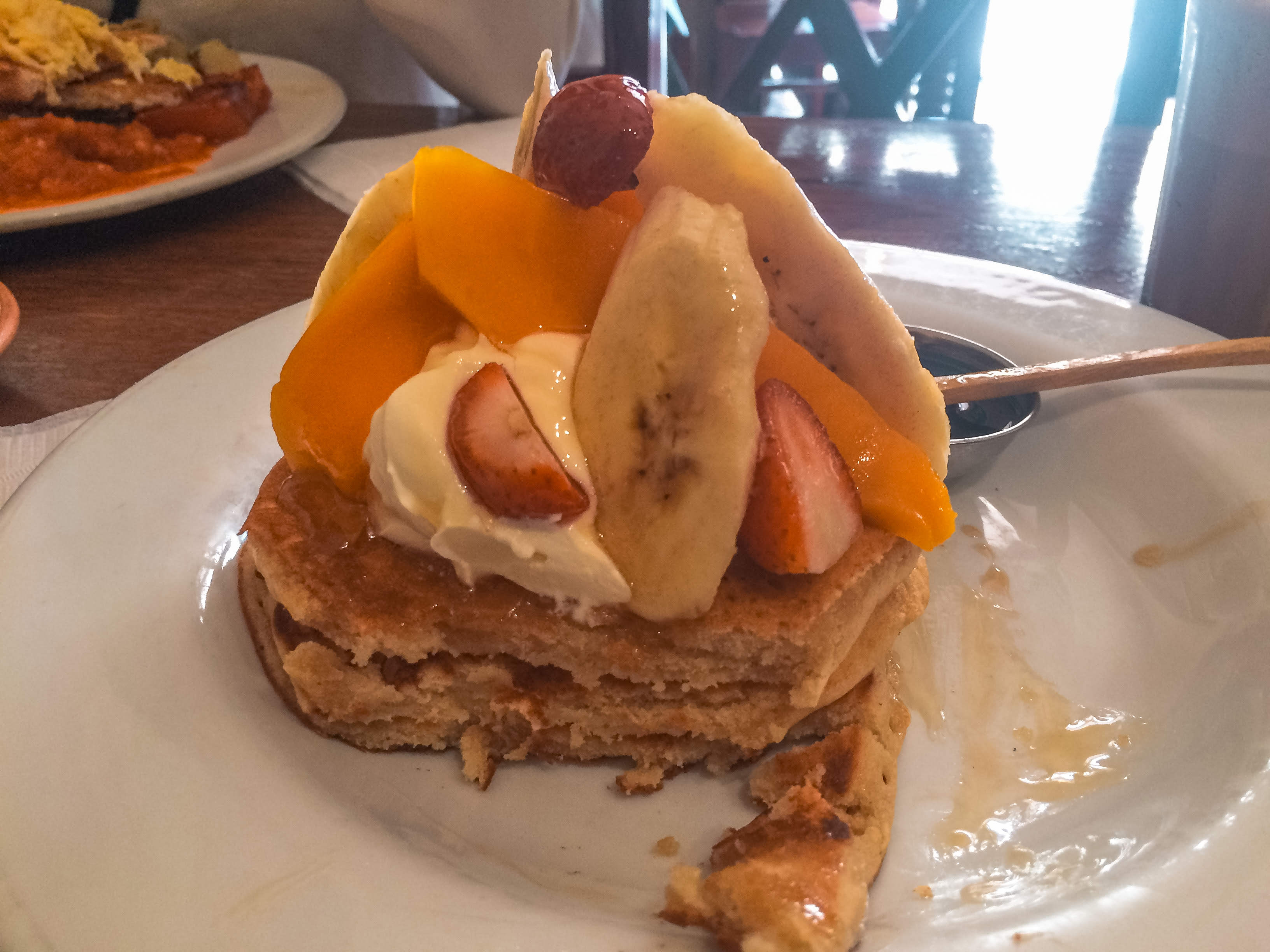
Meeting place
By far my favourite place for having breakfast in Cusco is Meeting Place located in the picturesque San Blas. They have the absolute best breakfast with croissants filled with avocado egg bacon and loads more. Even more special are their homemade milkshakes made of fresh ice cream and of such big size that your glass will overflow. They also have amazing pie, pastries and waffles. Worth a visit! Meeting place is located at Plazoleta de San Blas 630, Cusco 08003, Peru.
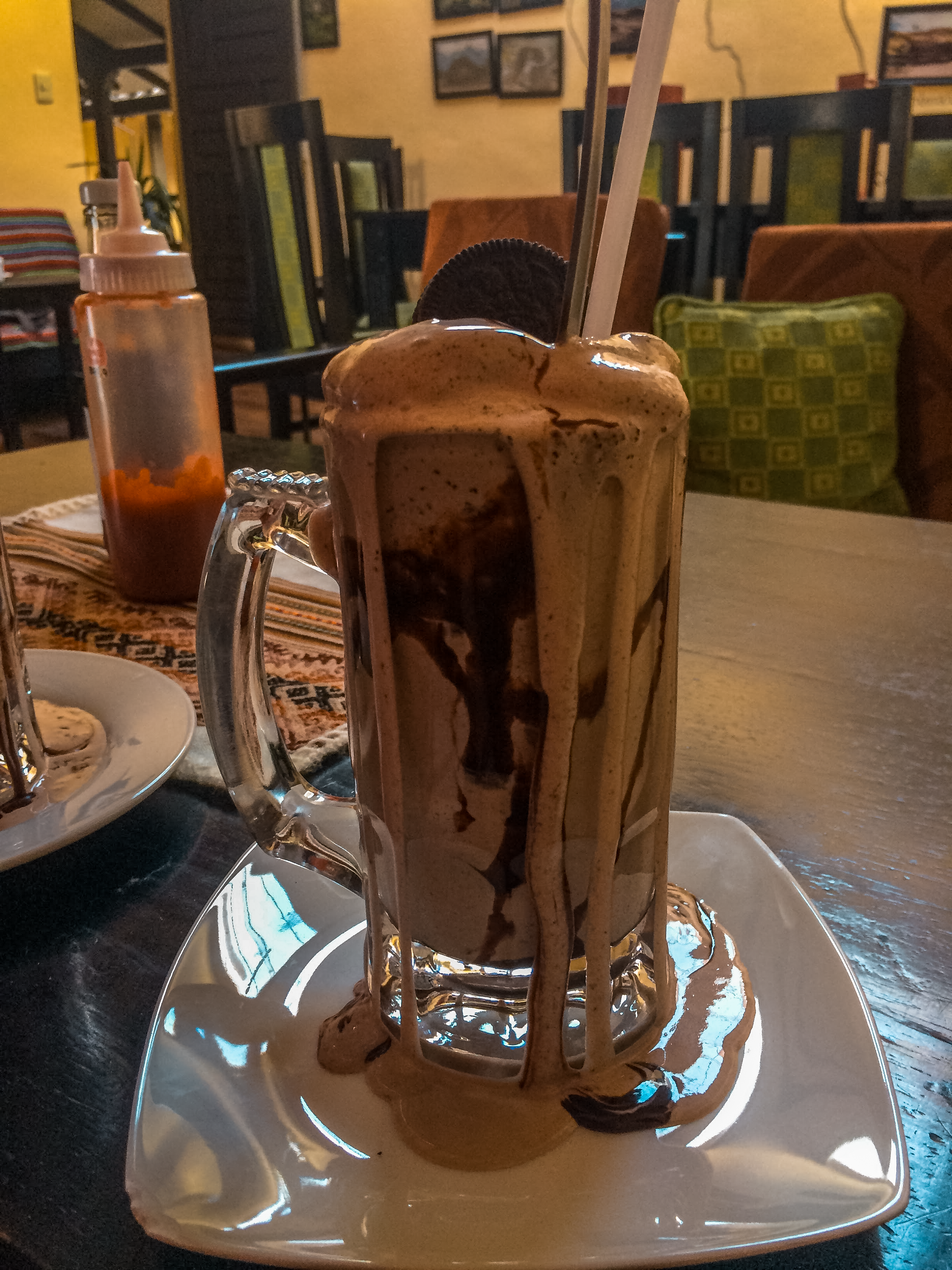
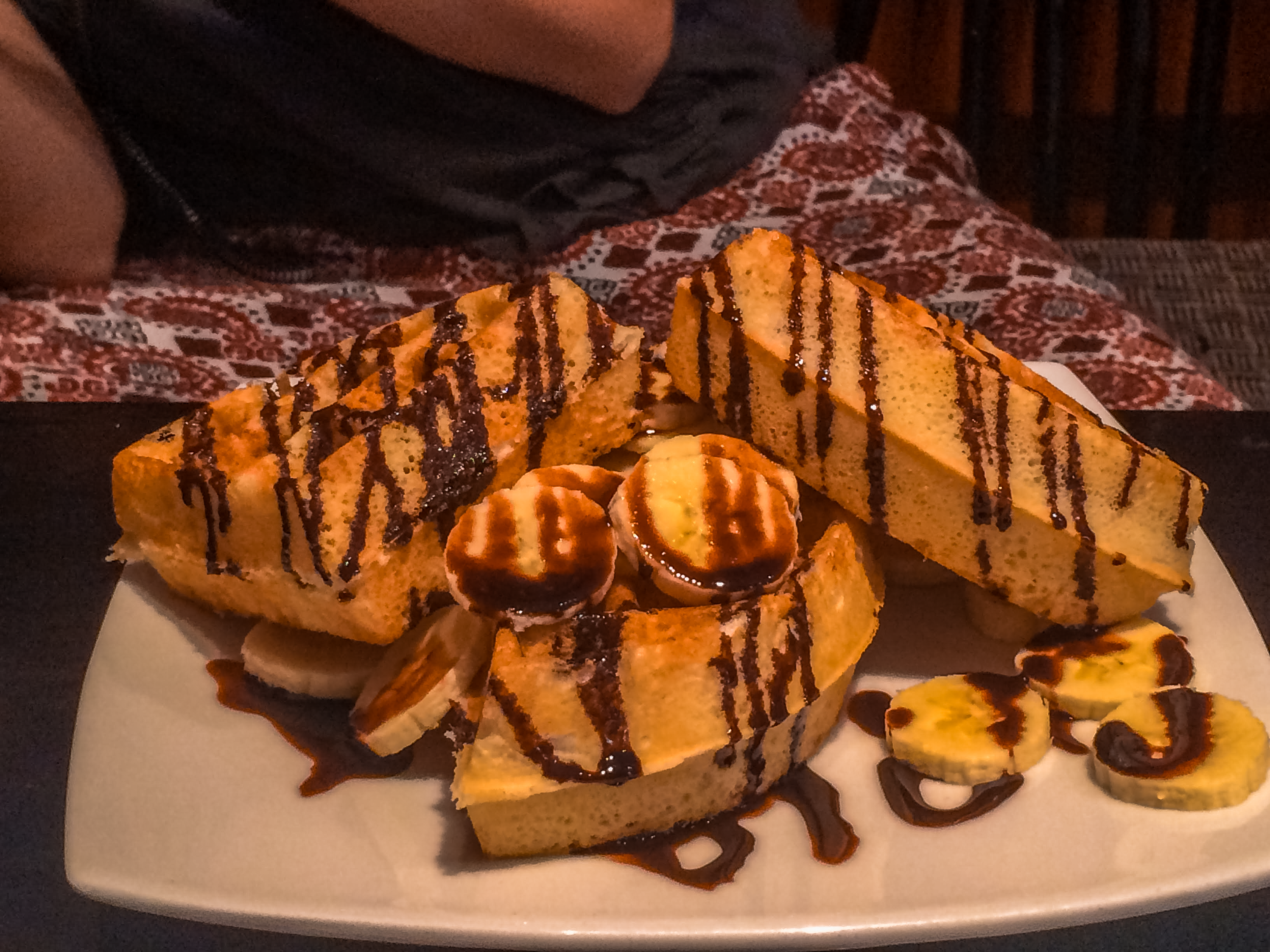
Dinner
Chevice at Mar Limon
This delicious dish consists of raw fish that is ‘cooked’ by the use of sour limes. It is typically Peruvian and I had the best ceviche at a tiny local restaurant in Cusco called Cheviceria de Mar Limon. It is located a little remotely but by cab, you will find this place easily. Not many tourists know this place, but locals certainly do. The address: Ricardo Palma, F-12-A, Jiron Ricardo Palma, Cusco, Peru.
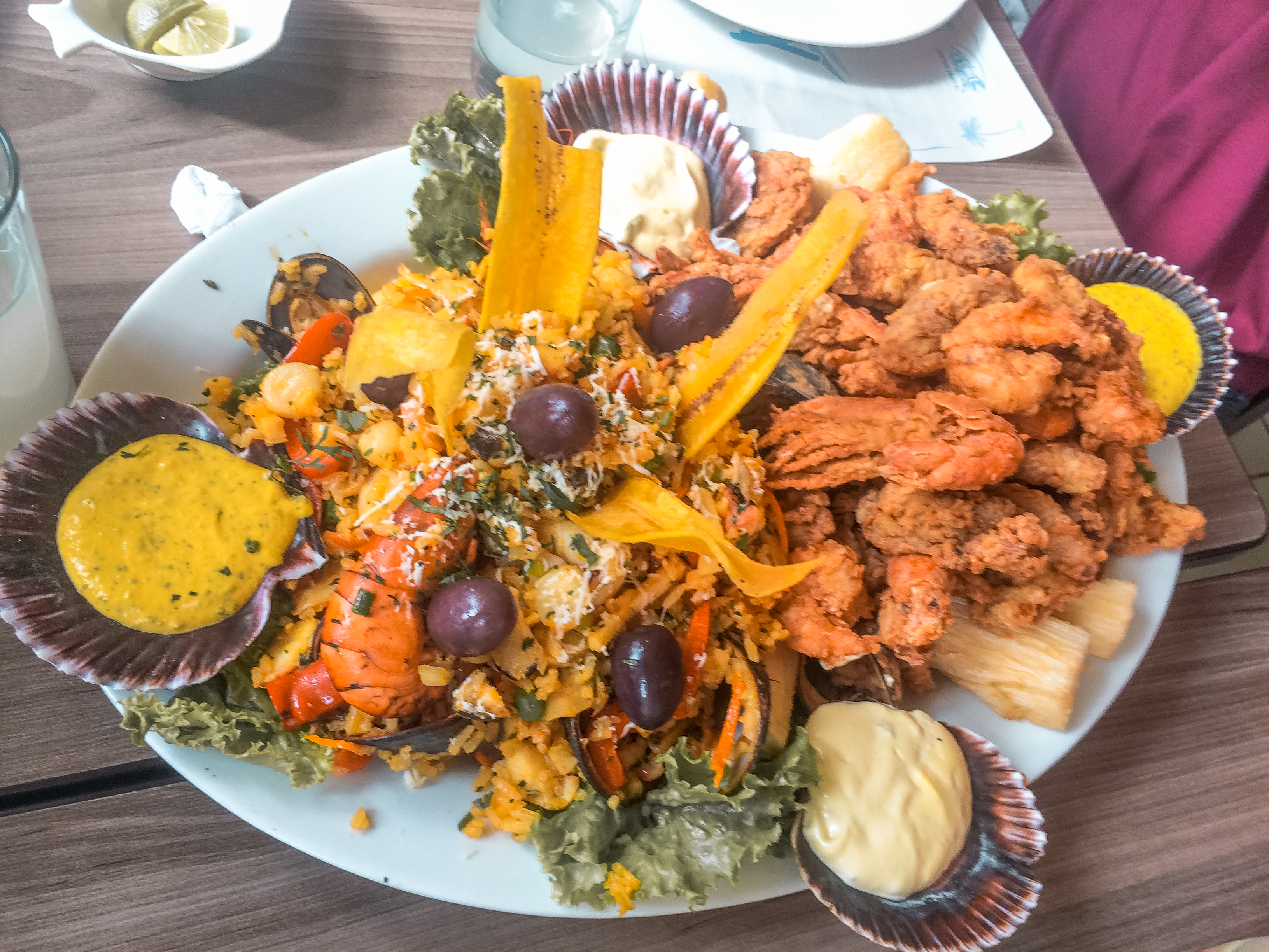
Alpaca at Uchu’s
Yes, it is contradictory that I have been talking about fluffy cute alpaca’s and will now start convincing you of how great they taste, but I will do it anyway. Alpaca is by far the best and freshest meat I have ever eaten and Uchu’s is known all over Cusco for serving the best meat in town. It is pricier than what is average in Cusco but I would right away go there again. Uchu’s is found at Calle Palacio 135, Cusco 08002, Peru.

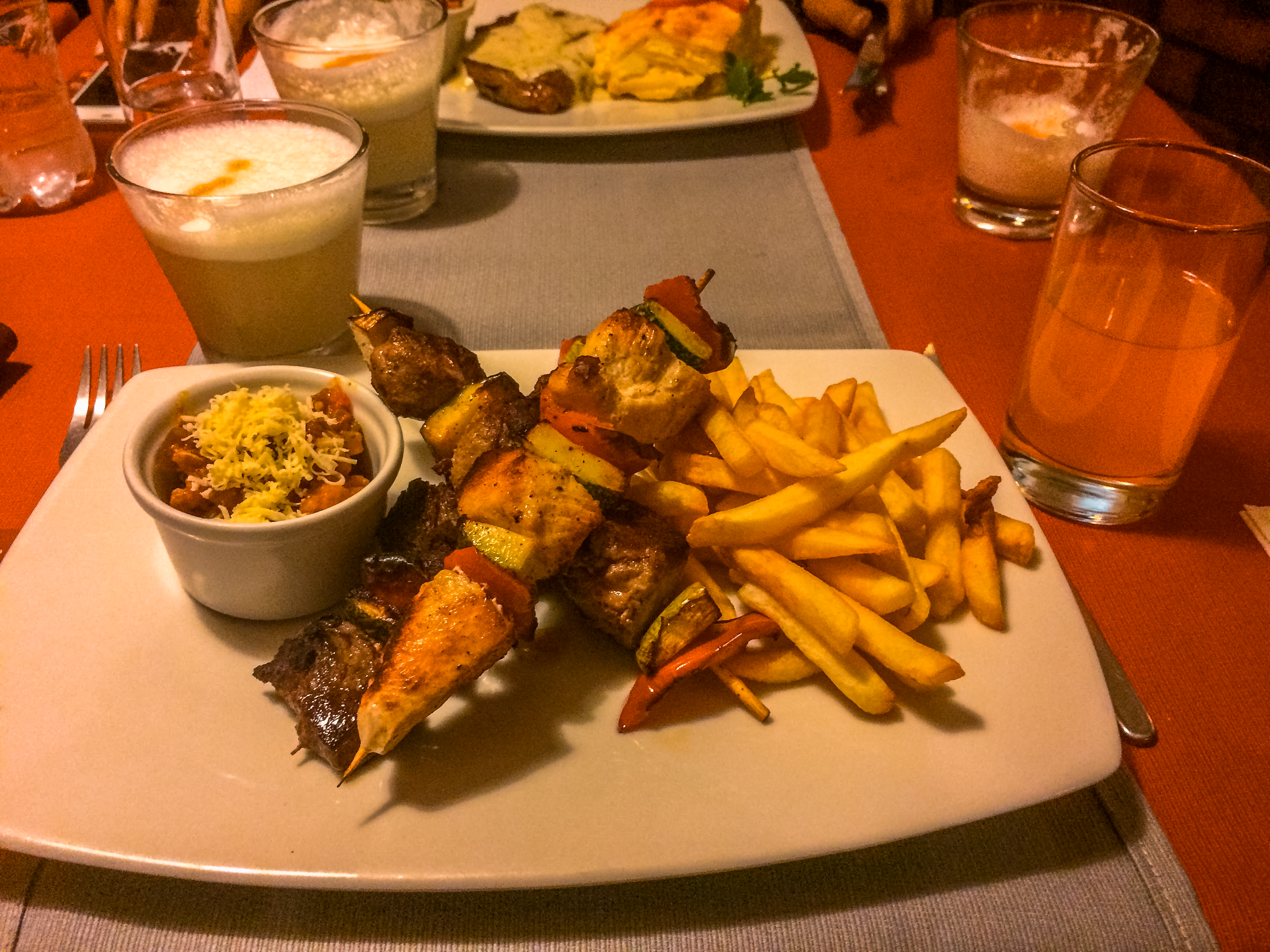
Other
Qucharitas
Qucharitas is a very small cute place in Cusco that serves delicious and fresh icecream. It is decorated with colourful umbrellas and will make your day. Find Qucharitas close to Plaza de Armas at Procuradores 372, Cusco 08000, Peru
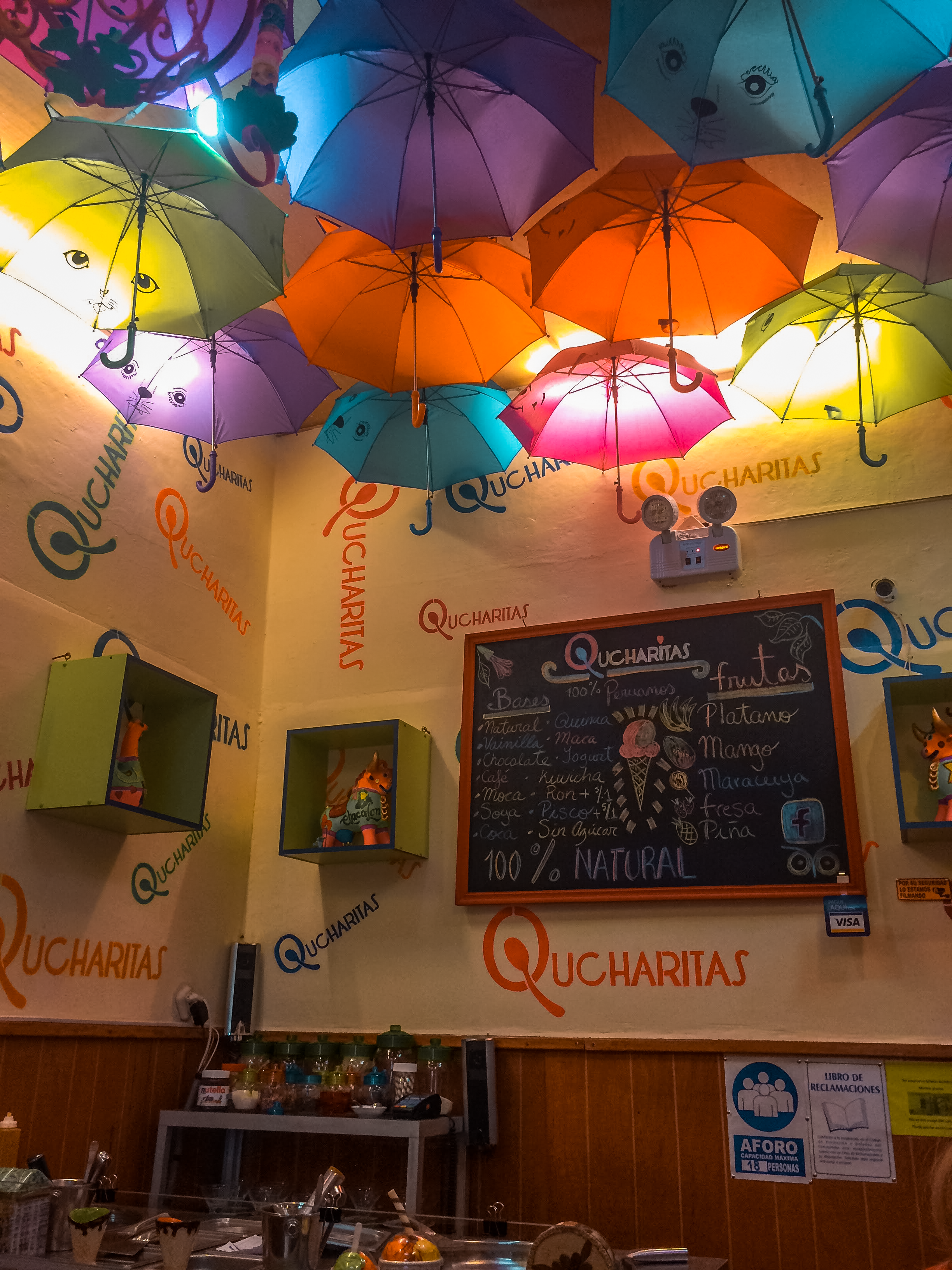
L’Atelier
this coffee place is a bit further away from the historical centre of Cusco but is quiet, peaceful and gives you a view over San Blas. It is a great place to plan your trip or enjoy a (rare) good coffee in Cusco. L’Atelier is located at Atoqsayk’uchi, Cusco 08003, Peru.
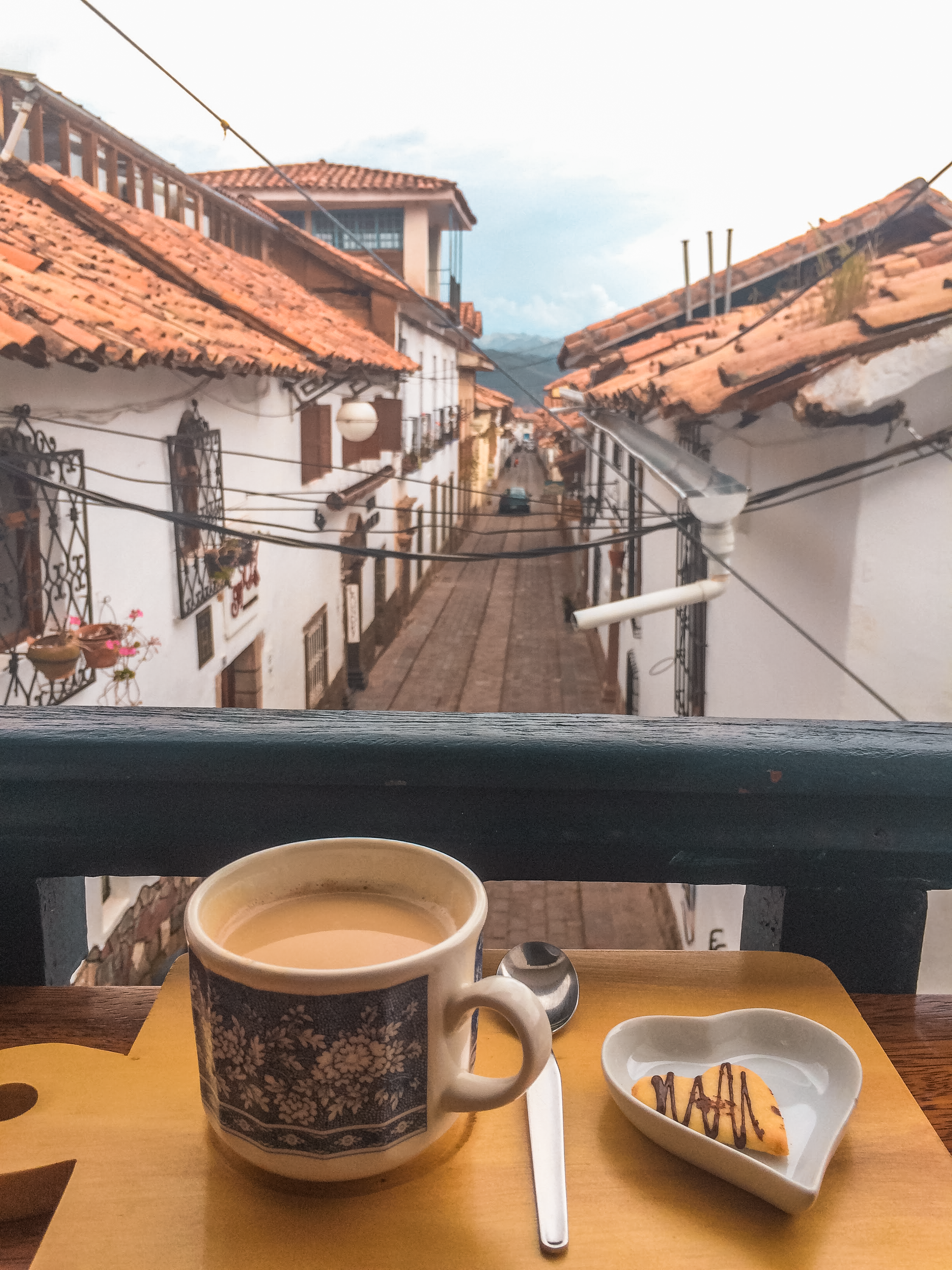
Tip: Interested in more local dishes like a guinea pig or piquarones and where to eat the best in Cusco? Sign up and receive 5 more restaurants that will exceed your expectations.
{{cta(‘a9fb2884-01fc-4464-b760-ba11f918ab82′,’justifycenter’)}}
Support locals in Cusco
There are several ways of supporting local Cusquenian people. However, many tourists pick the ways by which they support unhealthy behaviour and scams. Here’s a couple of tips on how to support locals and how not to.
Don’t do this
Llama ladies
The llama ladies are everywhere in Cusco dressed in traditional clothing dragging around a (baby) alpaca. This seems so much fun to take a picture with them and only leave them a couple of soles, but be aware of the fact that these animals are not treated well. They are hardly fed, do not get sufficient water and have to walk all day on stones. Especially the baby alpacas get tired easily but have to be awake all day for whenever the llama lady sees a tourist approach. I have literally seen these llama ladies drag sleeping alpacas over the stones to keep up with the speeding tourists. If you would like to take a picture with an alpaca without stimulation this cruel treatment, please consider the Campo de Artesanos found in the historical centre of Cusco.
Children in Cusco by night
The nightlife of Cusco is vibrant and the poorer locals know so too. When going out for dinner or to a club, you will very often see little kids come to you offering you bracelets or keychains of little alpacas. Think twice before handing your soles to these kids, because they are often no more than six years old and are supposed to be in bed and go to school the next day. If you want to stimulate helping kids off the streets by night and have a chance in life, don’t be charmed into buying their stuff. There are plenty of shops that sell the exact same stuff.
Fall for scams
Like any other country that has tourists around the world, Cusco has s well a couple of scams. They are more subtle than you might expect, an example is the shoe cleaner scam. Around Cusco, you will find locals asking you to clean your shoes for 1 sole. Initially, there seems no harm, but when they start cleaning they will use all kinds of products and clean your shoes as if their lives depend on it. In the end, they will charge you the most ridiculous amounts of money and will pressure you in a very threatening way to make sure you pay them. The easy way out is just giving them the money but by doing so you reward them for their dirty trick. Forewarned is forearmed!
Please do this
Local restaurants
Go to local restaurants and try to avoid big food chains like Mc Donalds or Subway. Very often tourists choose a brand they know to avoid being sick or because they are simply scared to try local food. This is a waste of all the great food found in Cusco. Try to eat local dishes and not just pick the first best restaurant in Plaza de Armas. Most food prepared in Cusco is made of fresh and biological products because there is hardly any import. If you want to try Alpaca, for example, the meat is extremely fresh straight from the mountains and the vegetables served along with the dish are often locally grown too. I can confidently say, that this is not the case with your beefburger from McDonald’s. I haven’t seen a single cow in Peru. Check the restaurants mentioned earlier to see what the best places are.
Buy your souvenirs at supporting shops
During my time in Cusco, I did voluntary work at a residential home for orphaned and abandoned girls. To fund their costs they make pottery which is sold in the historical centre of Cusco. The pottery sold is absolutely stunning and has decent prizes considering the fact everything is handmade.
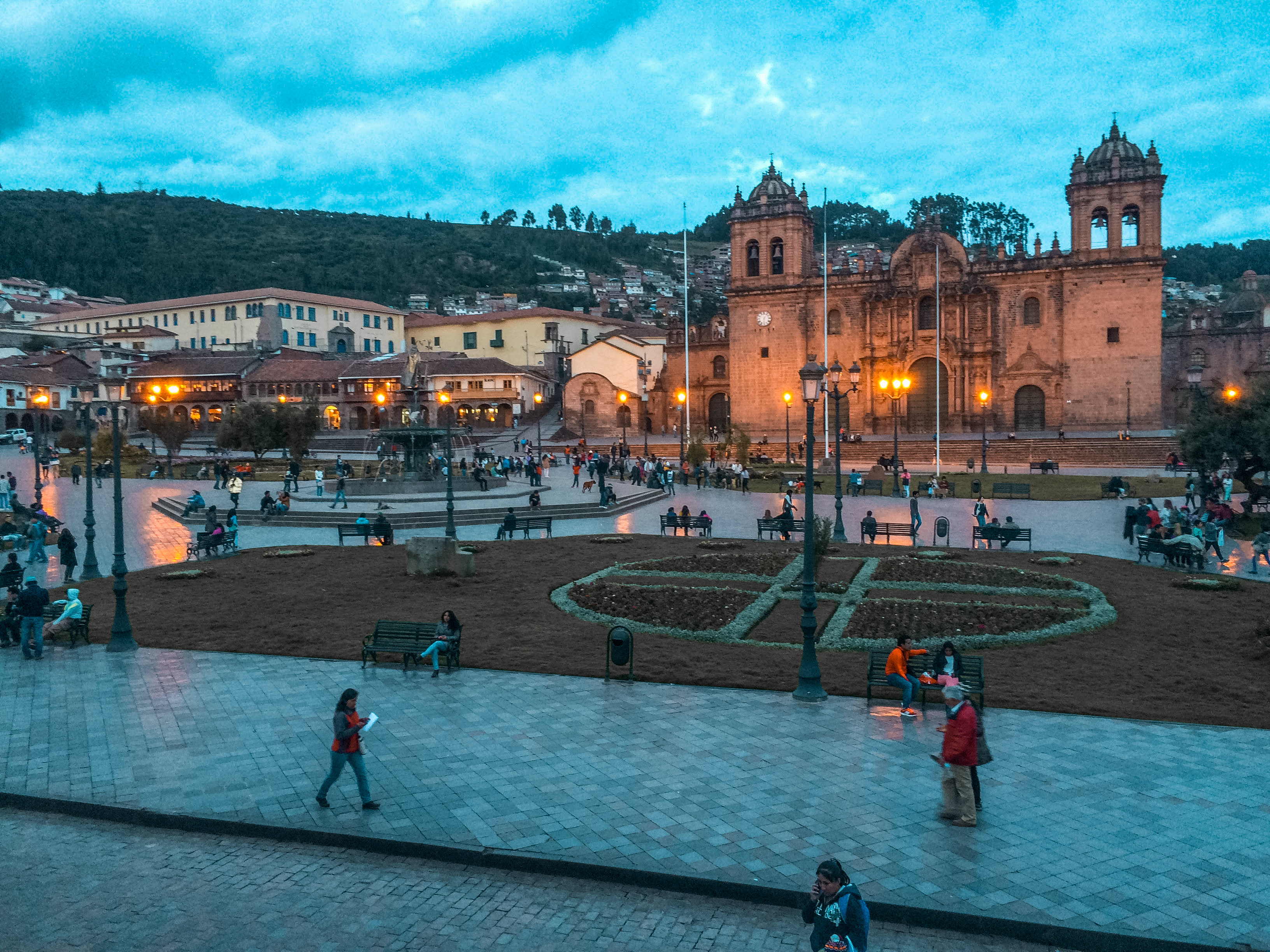
In general, try to buy your souvenirs at local markets and not in the big fancy tourist shops. This way you will give locals that cannot afford to rent a big shop a chance to sell you their goods. Often, they are so grateful for you buying stuff that they give you things for free or want to give you a discount. Fun fact: you will undoubtedly find the most original souvenirs at local markets.
All in all, Cusco is one of the best places to see in Peru! Enjoyed reading this article and would you like to see more? Subscribe below for more tips on restaurants and fun things to do in Cusco.
{{cta(‘a9fb2884-01fc-4464-b760-ba11f918ab82′,’justifycenter’)}}
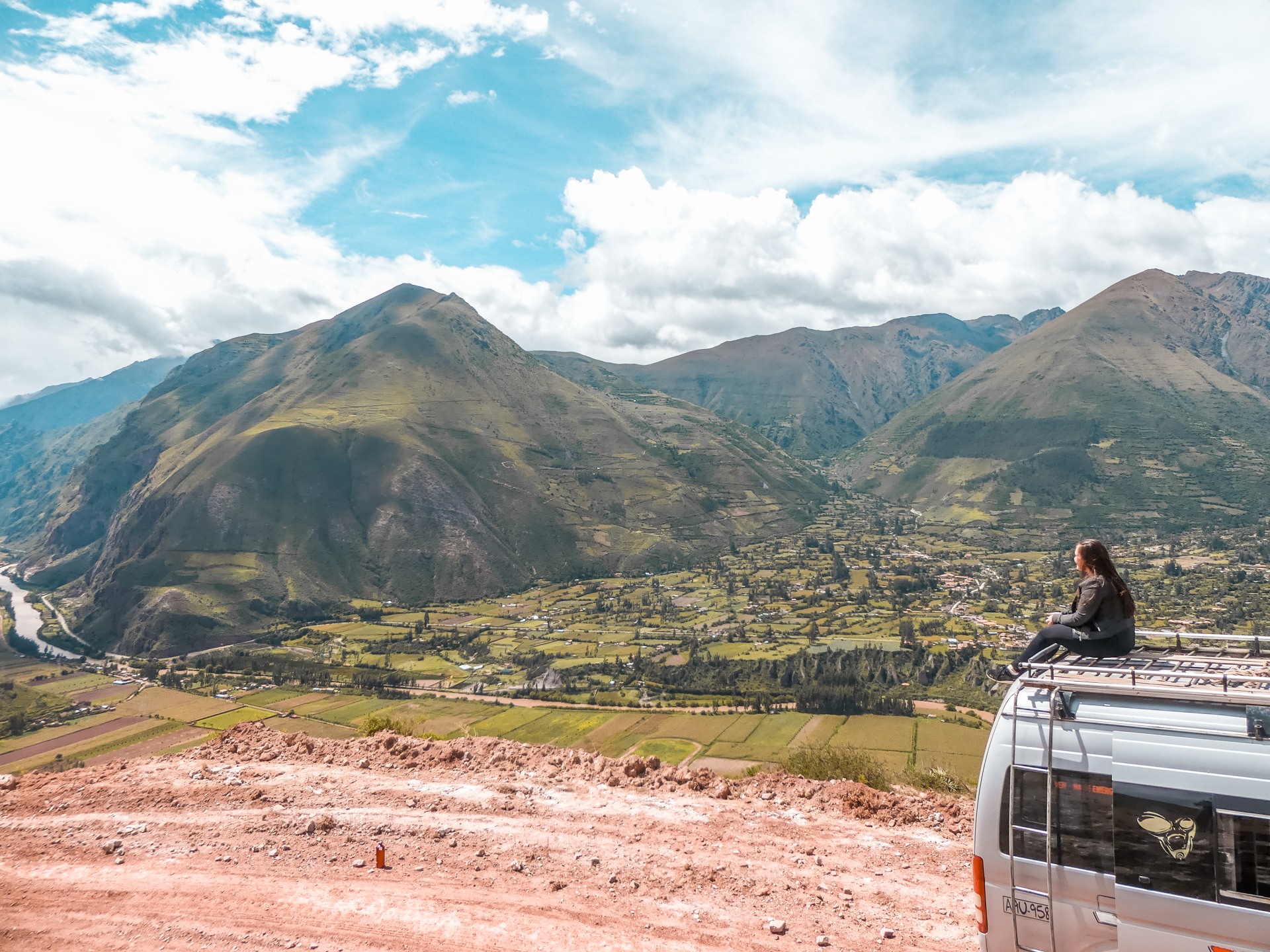
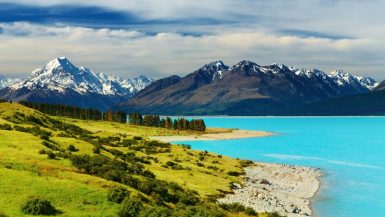
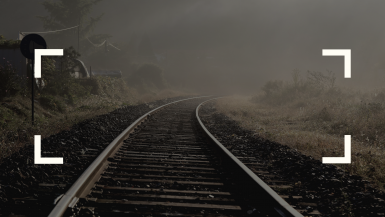
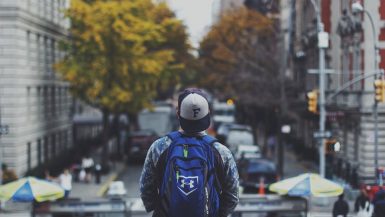
Leave a reply